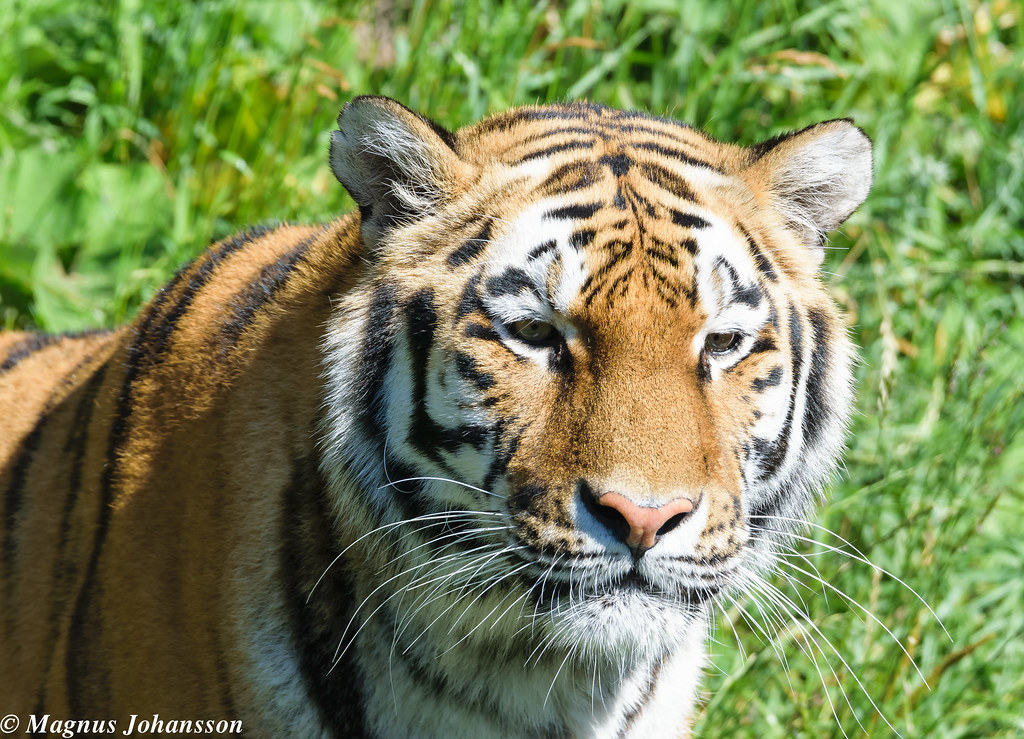
Nature’s got a need for speed, and some animals have evolved so far beyond the usual pace of life, they’re practically breaking the rules. The ingenuity of the animal kingdom continually presents us with creatures whose capabilities seem to transcend conventional understanding, pushing the very boundaries of what we deem physically possible, operating with an efficiency that would require immense technological effort for humans to replicate.
From movements faster than the blink of an eye to escape tactics that would leave a Formula 1 driver breathless, these creatures aren’t just fast; they’re truly outrageous. They dodge, snap, strike, and sprint in ways that appear to bend biology, physics, and sometimes even logic. Their adaptations offer a fascinating glimpse into evolutionary solutions for survival, challenging our preconceptions about mechanics and aerodynamics.
These animals move so fast, or exhibit such extreme physical feats, it doesn’t feel real. Their existence compels us to rethink what the laws of physics truly allow within the biological realm. Join us as we explore the first set of these incredible organisms that truly appear to defy the very fabric of physical law.
.jpg/1200px-Mantis_(European).jpg)
1. **Mantis shrimp – punch speed that defies physics**This little crustacean doesn’t look like much, but it’s hiding one of the fastest punches on Earth. The mantis shrimp’s club-like limbs can strike at over 50 miles per hour, creating a shockwave so powerful it actually causes the water around it to boil. This incredible velocity is a prime example of extreme biological engineering in action.
This isn’t an exaggeration, either. It literally produces cavitation bubbles that explode with intense heat and sound. This phenomenon, where rapid pressure changes create vapor-filled cavities, generates an explosive force. The mantis shrimp harnesses this power to devastating effect, turning a simple punch into a miniature underwater explosion capable of obliterating its prey.
To put it simply, the mantis shrimp punches faster than a speeding bullet. It doesn’t just knock out prey; it obliterates it with a force and speed that seem to defy typical physical limitations for its size. Its strike is one of the most powerful, non-muscular driven movements known, a true marvel of biomechanics and a testament to evolutionary innovation.
Then, just when you think it couldn’t get weirder, this remarkable crustacean can also see ultraviolet and polarized light. This gives it one of the most complex visual systems on the planet. This advanced sensory perception, coupled with its unparalleled striking ability, cements the mantis shrimp as a creature that operates on a different level of physical prowess and biological sophistication.
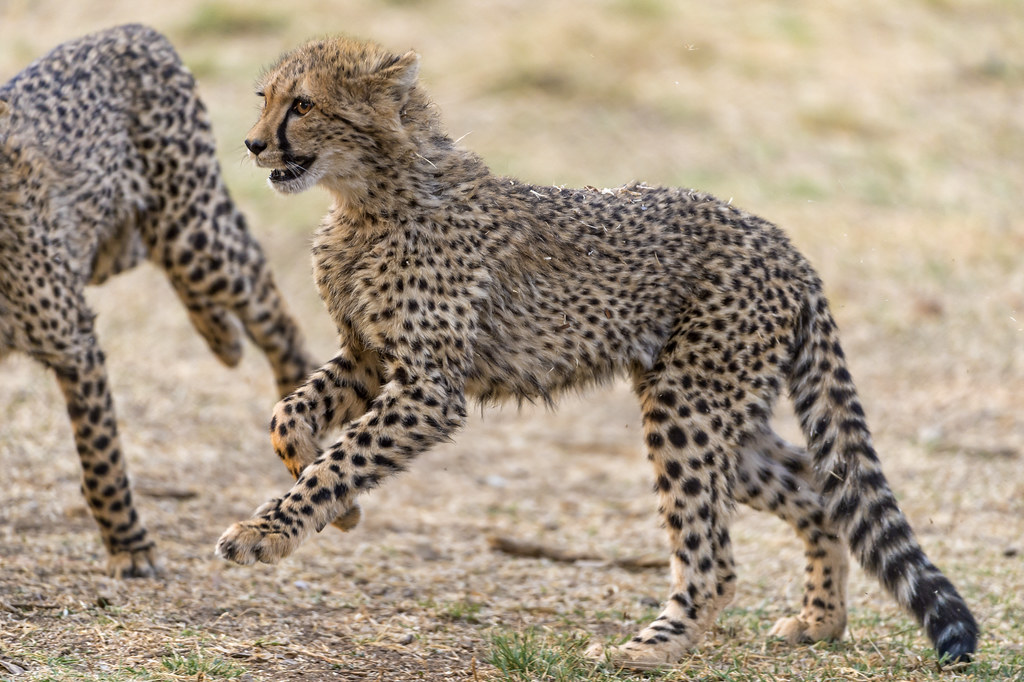
2. **Cheetah – world’s fastest land animal**The cheetah is the obvious pick for speed, but its presence here is justified by capabilities beyond mere velocity. While it can hit 60 to 70 miles per hour in short bursts, its acceleration truly astonishes. Cheetahs can go from 0 to 60 in just a few seconds, a feat faster than most high-performance sports cars, showcasing explosive power.
Their incredible speed is a masterpiece of biological engineering. The cheetah’s spine works like a massive spring, stretching and recoiling with each stride. This unique flexibility allows it to dramatically extend its reach, giving each powerful leap insane length and propulsive force, effectively launching the animal forward with immense power.
Further aiding their grip and traction, their claws don’t retract fully, acting much like natural cleats during a high-speed sprint. This constant ground contact, combined with oversized nasal passages to maximize oxygen intake and a long tail for crucial balance, transforms the cheetah into a perfectly tuned biomechanical sprinting machine, optimized for peak performance.
However, even this natural marvel has its limits. A cheetah can only maintain its top speed for a brief 20 to 30 seconds before overheating. This serves as a stark reminder that even the most astounding natural adaptations must contend with the fundamental laws of thermodynamics, yet their sustained ability to achieve such acceleration remains a profound testament to evolutionary design.
Read more about: The Fastest SUVs on the Road

3. **Peregrine falcon – the fastest dive on Earth**If you’re talking raw speed, no animal on land or sea comes close to the peregrine falcon in a dive, a maneuver known as a stoop. When hunting, this magnificent bird folds its wings tightly against its body and plummets toward prey at speeds over 200 miles per hour. This isn’t just fast; it’s venturing into supersonic territory, an astonishing display of aerial dynamics.
To survive the immense velocity and air pressure generated during such a dive, the peregrine falcon is literally built like an arrow. Its streamlined body minimizes drag, while internal adaptations protect its delicate physiology. Its nostrils, for instance, have tiny baffles that cleverly reduce air pressure as it plunges, preventing damage to its respiratory system.
Furthermore, its bones are structured specifically to withstand the insane G-forces and aerodynamic stresses encountered at these extreme speeds. This remarkable skeletal and aerodynamic design allows it to maintain structural integrity where other birds would simply disintegrate, highlighting a profound mastery of high-speed physics and biological resilience.
The result of these specialized adaptations is a bird that effectively turns gravity into a precision weapon, leaving physics textbooks looking nervous with its capability to harness and control such immense forces. The peregrine falcon stands as a testament to how evolution can sculpt a living being to perform at the very edge of physical possibility, making it the undisputed speed champion of the skies.
Read more about: Beyond the Redline: A MotorTrend Exploration of Earth’s Ultimate Speed Machines and Natural Wonders
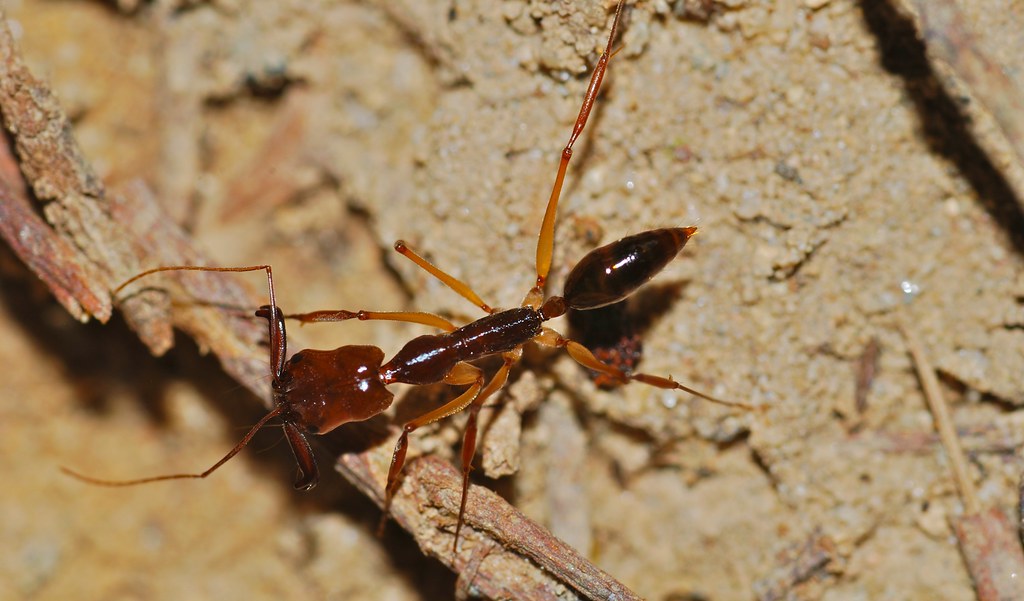
4. **Trap-jaw ant – jaws that snap faster than your neurons fire**These tiny ants possess some of the fastest recorded movements in the entire animal kingdom, an astonishing feat for such diminutive creatures. Their specialized jaws can snap shut in an incredibly brief 0.13 milliseconds. This speed is so phenomenal that the sheer force generated by the snap can actually launch the ant itself into the air, much like popcorn from a hot pan.
The primary function of this lightning-fast mandible action isn’t solely for attacking prey, though it’s certainly effective for that. Crucially, they use their jaws as a literal escape mechanism. By snapping their mandibles against the ground, they can propel themselves away from danger or reposition themselves rapidly, demonstrating an innovative application of kinetic energy for survival.
Scientists have painstakingly recorded their mandibles moving at over 140 miles per hour, an almost inconceivable velocity for something so small. The sheer power generated by these miniature biological mechanisms is hard to believe, yet it is all rooted in sophisticated mechanics. It’s akin to the immense stored energy of a mousetrap, scaled down and souped up to an extreme degree within a living system.
This ability to generate such rapid, powerful movements from such a small frame showcases a unique evolutionary pathway to extreme speed. The trap-jaw ant manipulates fundamental physical principles, transforming stored elastic energy into explosive motion, illustrating that the laws of physics can be bent and repurposed in astonishing ways even at the micro-scale of the insect world.
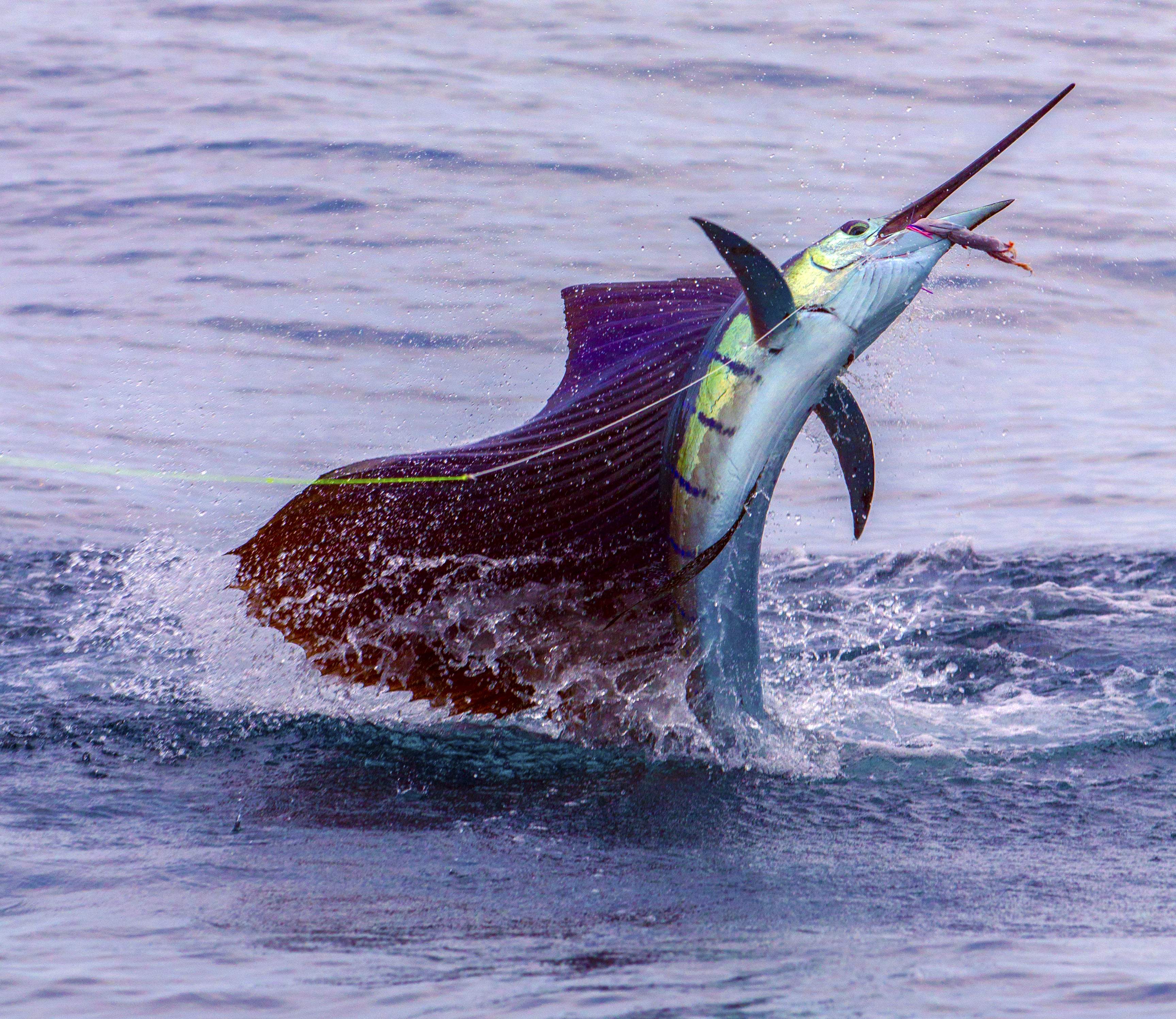
5. **Sailfish – the ocean’s speed demon**In the vast blue expanse of the sea, the sailfish reigns supreme as the undisputed monarch of speed. Clocked at an astonishing around 68 miles per hour, it is officially recognized as the fastest fish in the world, a true marvel of aquatic engineering and raw power. Its streamlined design allows it to cut through water with unparalleled efficiency.
The sailfish’s body is long and perfectly torpedo-shaped, specifically evolved to slice through water with almost no drag. This remarkable hydrodynamic form minimizes resistance, enabling it to achieve and maintain incredible velocities. Adding to its advanced design, its prominent dorsal fin, from which it gets its name, can be fully retracted into a groove along its back, much like a spoiler on a high-performance vehicle, providing better control and further reducing drag.
However, its speed isn’t solely for outrunning predators or rivals. The sailfish masterfully employs its blistering pace to execute short, devastating charges at dense schools of fish. This allows it to slash and stun multiple prey items in quick succession before circling back to consume them, a highly effective hunting strategy that leverages its unique physical attributes.
When the sailfish attacks, the whole ocean seems to part for it, creating a visual spectacle that almost defies belief. Watching one move in real time feels more like observing a CGI effect from a blockbuster movie than witnessing a living creature in its natural habitat. Its effortless movement through water at such extreme speeds is a profound testament to the elegant solutions nature finds to push physical boundaries.

6. **Hummingbird – the aerial acrobat**Hummingbirds don’t just flap their wings fast; they rewrite the fundamental rules of flight as we understand them. Known for their extraordinary flying abilities, they can hover in place with absolute precision, displaying an unmatched mastery of aerial control. Their tiny wings beat incredibly rapidly, some species up to 80 times per second, creating a perpetual blur that generates the necessary lift to remain perfectly stationary while feeding on nectar.
This remarkable level of control and speed is truly unmatched in the avian world. They are capable of flying forwards, backwards, and even upside down, executing complex maneuvers that would challenge even the most advanced human-engineered drones. This allows them to access food sources in a way that other birds simply cannot, navigating intricate floral structures with breathtaking accuracy.
However, such an intensive and energy-demanding flight style comes at a significant metabolic cost. To fuel this constant, high-speed movement, their metabolism is through the roof, making them one of the most metabolically active creatures on Earth. Their tiny hearts can beat over 1,200 times per minute, a rate that demands an almost constant intake of food just to sustain their astonishing activity levels.
Despite their minuscule size, these aerial acrobats demonstrate a profound mastery of aerodynamics and energy conversion that challenges our conventional understanding of physics. Their speed, agility, and precision are anything but small-time, making them true marvels of the avian world and exemplifying how nature finds elegant solutions to push the boundaries of biological possibility and physical performance.
Read more about: 15 Mind-Blowing Animal Facts You Absolutely Won’t Believe
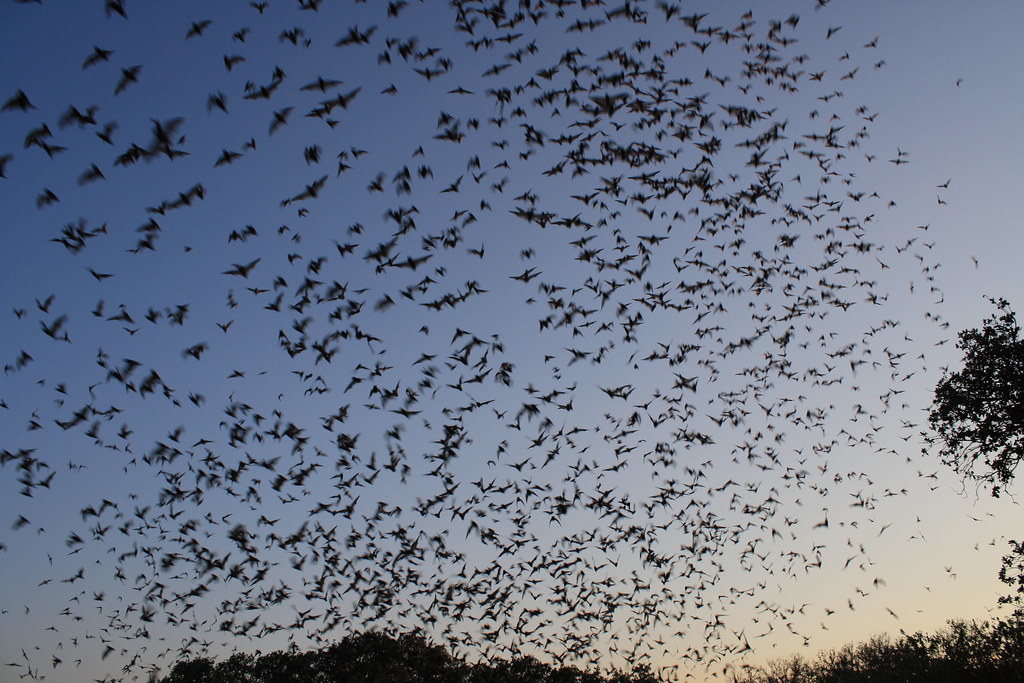
7. **Mexican free-tailed bat – fastest level flight**When the conversation shifts to sustained level flight, excluding the spectacular dives or explosive lunges, the Mexican free-tailed bat decisively takes the crown. It has been meticulously clocked flying at over 99 miles per hour, establishing its record as the fastest horizontal flier ever recorded in the animal kingdom. This incredible speed is not just for short bursts but for prolonged journeys.
Its ability to achieve and maintain such remarkable velocities is largely attributed to its unique wing design. The bat possesses long, narrow wings that are perfectly adapted for high-speed cruising. These slender appendages minimize drag while maximizing lift efficiency, allowing it to cover vast distances with impressive speed. This specialized morphology sets it apart from other bat species.
Indeed, this aerial marathoner is renowned for its extensive migratory patterns, known to travel hundreds of miles at a time during its seasonal movements. Such long-range capabilities at high speeds require an exceptional combination of endurance, metabolic efficiency, and aerodynamic optimization, truly pushing the limits of mammalian flight and defying expectations.
While it might not look dramatically different from other bats at first glance, the Mexican free-tailed bat is unequivocally built for long-range speed missions, not merely the typical flappy flutters seen in many of its nocturnal relatives. Its existence provides compelling evidence of how specialized evolution can fine-tune an organism for a singular, physics-defying purpose: unparalleled horizontal speed.
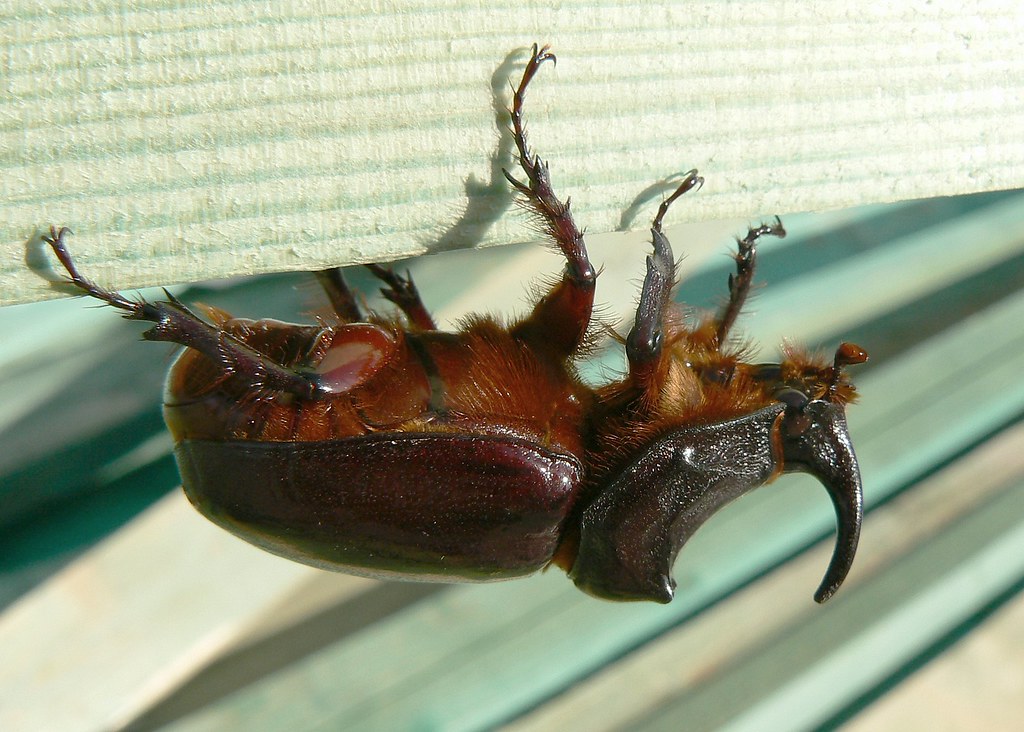
8. **Rhinoceros Beetle – the ultimate strongman of the insect world**Rhinoceros beetles (Dynastinae) present a staggering display of strength, capable of carrying up to 850 times their own body weight. For a human, this would be equivalent to lifting an incredible 65 tons, a feat challenging our notions of muscle mechanics and biological engineering. Their secret lies not just in brute force, but in sophisticated design.
Their extraordinary power is rooted in their chitin-based exoskeleton, providing an unmatched strength-to-weight ratio, far surpassing many human-engineered materials. This robust external skeleton, combined with the mechanical advantage of their six sturdy legs, allows them to efficiently distribute immense loads. Scientists are studying these beetles for insights into new structural materials and robotic systems.
Despite their formidable appearance with prominent horns, these incredible powerhouses are harmless to humans, primarily subsisting on rotting fruit and plant matter. The rhinoceros beetle stands as a living testament to how nature optimizes design for maximum performance, demonstrating strength that appears to bend the very laws of physics.
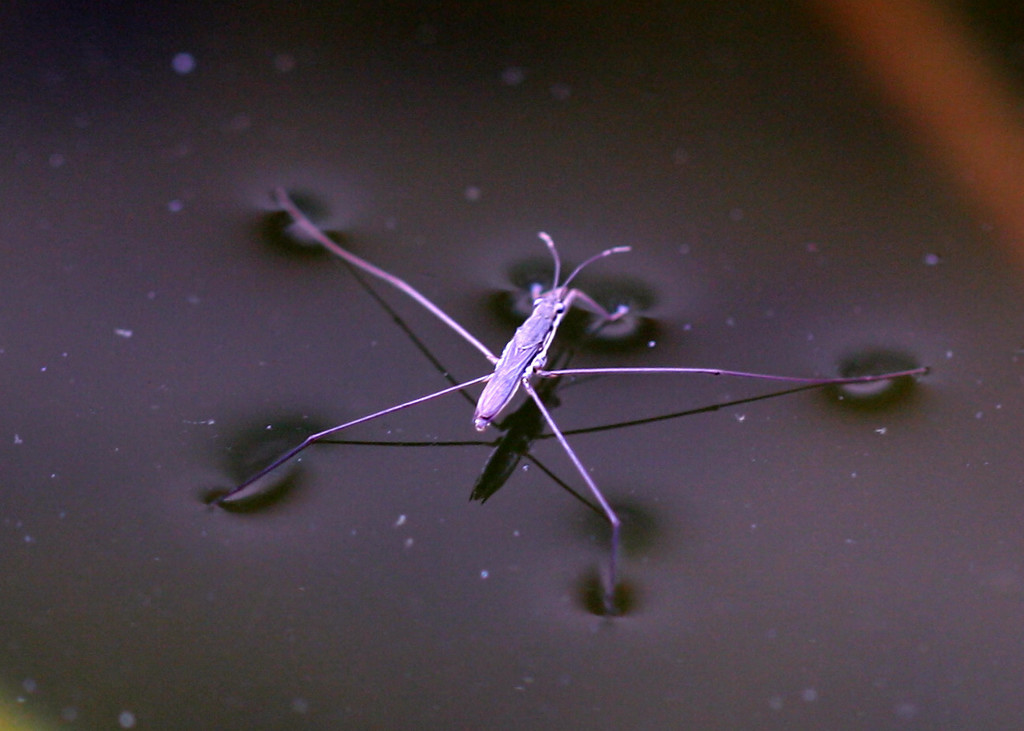
9. **Water Striders – masters of surface tension**Water striders (Gerridae) exhibit an almost magical ability, seemingly defying gravity as they effortlessly glide across the surface of water. This remarkable skill appears to contradict fundamental physics, yet these insects exploit surface tension with unparalleled efficiency. This property causes water molecules to cohere at the surface, forming a delicate but firm film.
Their secret lies in specialized legs, covered with thousands of microscopic, water-repellent hairs. These tiny structures effectively trap air bubbles, creating a buoyant cushion between their feet and the water. This ingenious adaptation meticulously distributes their minuscule weight over a larger area, preventing them from breaching the water’s surface. Each leg exerts a force precisely calibrated just below the threshold that would break surface tension.
This adaptation offers water striders unique access to food sources and serves as a brilliant escape mechanism from aquatic predators. This profound physical phenomenon has inspired the development of advanced water-walking robots and novel water-repellent materials, showcasing nature’s profound ingenuity.
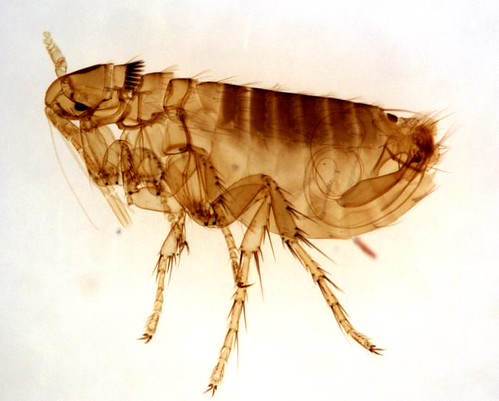
10. **Fleas – tiny insects, monumental leaps**Fleas may be diminutive, but they execute one of the most astonishing feats of acceleration in the animal kingdom. These minute insects can achieve leaps to heights 150 times their own body length, akin to a human jumping over a 30-story skyscraper. What makes this mind-boggling from a physics perspective is the sheer acceleration they generate, roughly 100 times that of gravity.
The key to their extraordinary jumping power is a specialized protein known as resilin, functioning like an incredibly efficient biological spring. Fleas compress this protein, storing tremendous elastic energy that is then released explosively when they initiate a jump. High-speed imaging reveals that fleas do not directly employ their muscles for the jump but harness this sophisticated, spring-loaded mechanism.
This ingenious method allows them to circumvent the physical limitations of muscle contraction speed, enabling an almost instantaneous burst of motion. The extreme acceleration experienced would be lethal to most other organisms, yet fleas have evolved specialized anatomical features to withstand these forces without harm. Bioengineers study this mechanism for new materials with similar energy storage capabilities and micro-jumping robots.
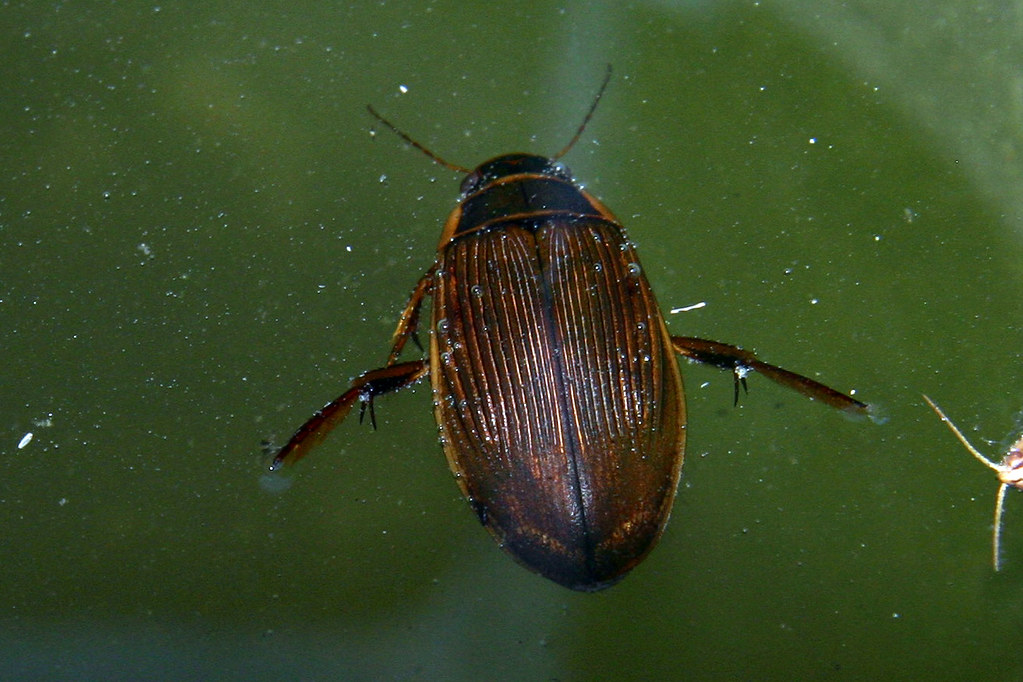
11. **Diving Beetle – the endless underwater breath**Diving beetles (Dytiscidae) have evolved a sophisticated, seemingly physics-defying system allowing them to breathe underwater without gills. These remarkable insects create a literal bubble of air, a “plastron,” which adheres to their bodies as they submerge. This ingenious plastron functions as a physical gill, facilitating a continuous and seemingly infinite oxygen supply underwater.
The mechanism is elegant and efficient: oxygen from surrounding water diffuses into the trapped air bubble, while carbon dioxide diffuses out. This gas exchange system appears to challenge conventional physics, as diving beetles can remain submerged for extended periods, even indefinitely in oxygen-rich waters. The secret to maintaining this lifeline lies in hydrophobic hairs covering their abdomens.
These specialized hairs meticulously trap the air bubble, maintaining its structural integrity against water pressure. This fascinating phenomenon has inspired the development of artificial plastrons for underwater breathing apparatus and water-repellent materials. Scientists at MIT have even created fabrics mimicking this mechanism, holding potential for humans to breathe underwater without traditional tanks.
Read more about: The 16 Most Drop-Dead Gorgeous Actors and Actresses Who Defined 1970s Hollywood
**Conclusion: Nature’s Physics-Defying Engineers**
These 11 remarkable animals, encompassing insects and arachnids, stand as undeniable proof that nature has been masterfully solving complex physical problems long before humanity ever began to comprehend the laws of physics. What, at first glance, might appear to contradict our understanding of physical laws, almost always reveals sophisticated evolutionary adaptations—ingenious biological mechanisms that operate precisely within these laws, often in unexpected and elegant ways. The ongoing study of these seemingly physics-defying creatures continues to ignite profound inspiration, driving countless innovations across materials science, robotics, engineering, and medicine. From the water strider’s astonishing mastery of surface tension to the rhinoceros beetle’s mind-boggling strength, these tiny creatures serve as a powerful, living reminder that the natural world remains our most profound teacher when it comes to unraveling and overcoming seemingly impossible physical challenges. As we persist in our quest to unravel the intricate mechanisms underlying these truly remarkable adaptations, we not only cultivate a deeper appreciation for the sheer complexity and boundless ingenuity of life, but we also gain invaluable insights that hold the potential to help us address some of humanity’s most pressing technological and scientific challenges. The natural world, in all its wondrous diversity, truly is the ultimate innovator.




